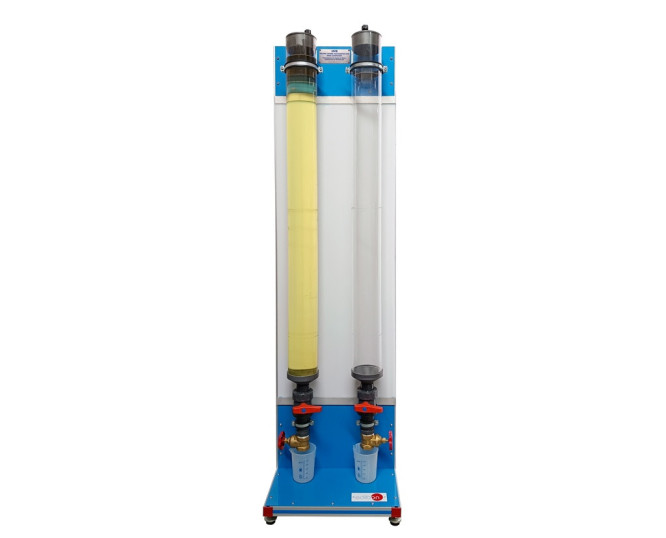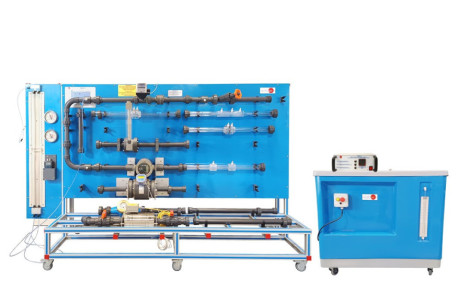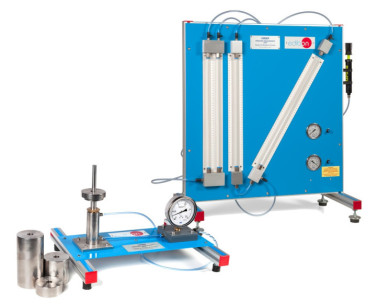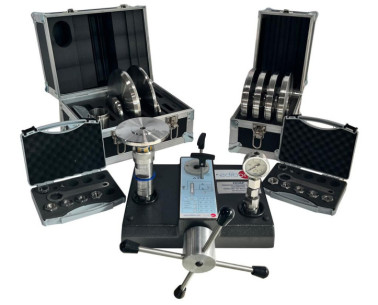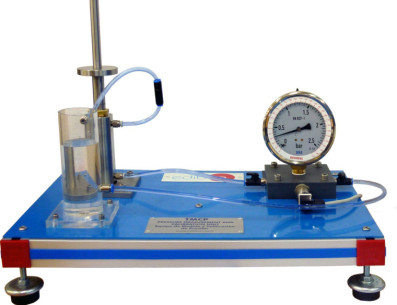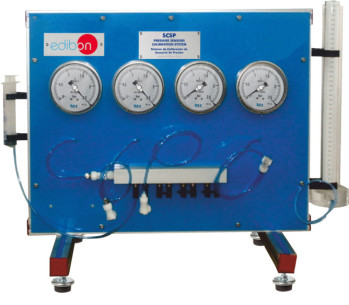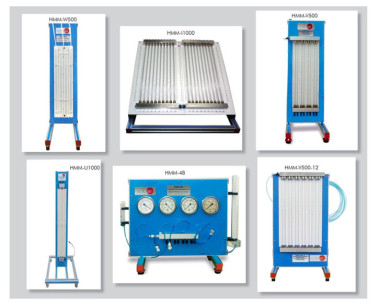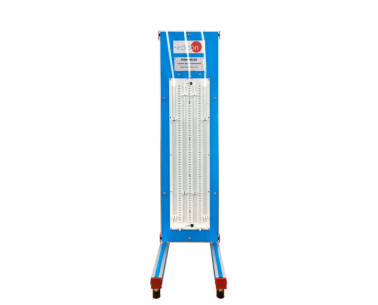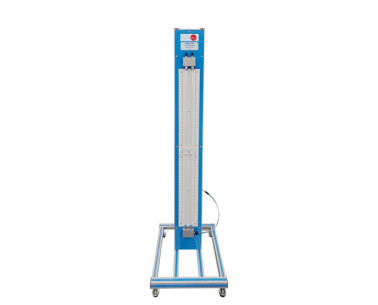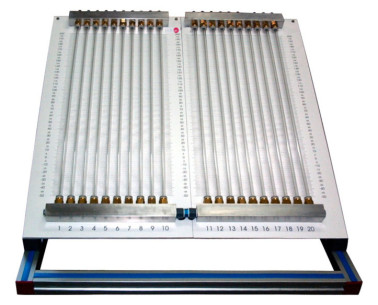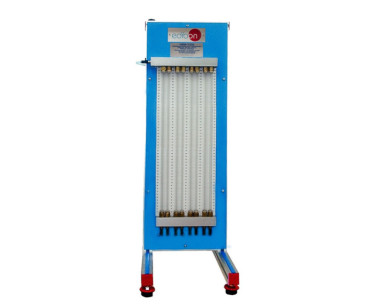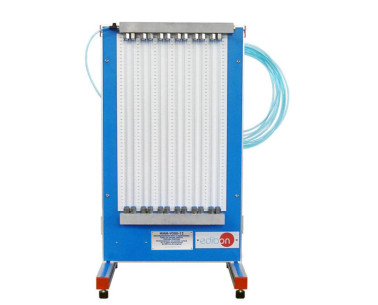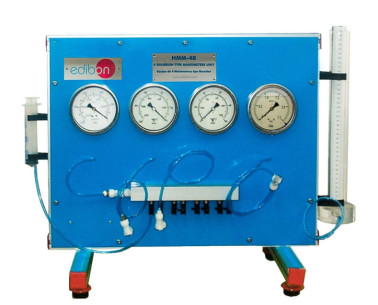HVB Gerät: Kugelfallviskosimeter und Bestimmung des Widerstandskoeffizienten
INNOVATIVE SYSTEME
The Drop Ball Viscometer and Resistance Coefficient Determination Unit, "HVB", designer by EDIBON, is used to determine dynamic or kinematic viscosities of fluids and the relationship between the drag coefficients of falling particles and their Reynolds number value.
Erweiterungen
Laboratorien
ÄHNLICHE NEUIGKEITEN
ALLGEMEINE BESCHREIBUNG
The Drop Ball Viscometer and Resistance Coefficient Determination Unit, "HVB", designed by EDIBON, consists of two precision transparent tubes fixed onto a frame in which a ball is allowed to drop down through different liquids. Both tubes can be filled with liquids of different viscosity. Thus, it is possible to compare the both liquids directly.
The unit is illuminated from behind with two fluorescent lamps to facilitate the visualization of the falling of the balls.
The ball is guided down by a guide to aid the introduction of particles at the top of the tubes with the minimum disturbance to the liquid. The unit includes several guides to facilitate the introduction of smaller balls.
During the exercises, students shall measure the falling rate of the balls by timing their passage between two marks on the walls of the tube.
Balls can be removed from the bottom of the tubes through two valves. Thus, the ball can be removed from the tube without a large loss of liquid.
Kinematic viscosity can be deduced by measuring the falling speed of a ball in a vertical tube filled with the fluid under study. During the uniform rectilinear motion phase, the forces which apply to the sphere, the gravity, the pressure of Archimedes and the force of the trail related to viscous friction are in balance.
The design of the unit is such that it is suitable both for practical trainee experiments in the fields of physics or engineering and for demonstration in the classroom.
The unit is supplied with a set of balls of different size, a stopwatch and two beakers.
ÜBUNGEN UND GEFÜHRTE PRAKTIKEN
GEFÜHRTE PRAKTISCHE ÜBUNGEN IM HANDBUCH ENTHALTEN
- Determination of the Reynolds number.
- Determination of the dynamic and kinematic viscosity of a fluid.
- Drag coefficient of various particles of spheres.
- Measurements of the spheres resistance coefficients vs Reynolds number.
- Measurement of the terminal velocities of the spheres.
ERGÄNZENDE AUSRÜSTUNG
Gerät zur Druckmessung
Präzisionsmanometer-Kalibrator
Gerät zur Druckmessung und -kalibrierung
System zur Kalibrierung von Drucksensoren
Manometer & Multimanometer (Verschiedene Typen):
Doppel-U-Rohr-Manometer
U-Rohr-Manometer
Schräg-Multimanometer mit 20 Messröhren, 250 mm Länge
Vertikales Multimanometer mit 8 Messröhren, 500 mm Länge
Vertikales Multimanometer mit 12 Messröhren, 500 mm Länge
Gerät mit 4 Bourdon-Manometern
QUALITÄT

KUNDENDIENST

 Cookie-Präferenzen
Cookie-Präferenzen

